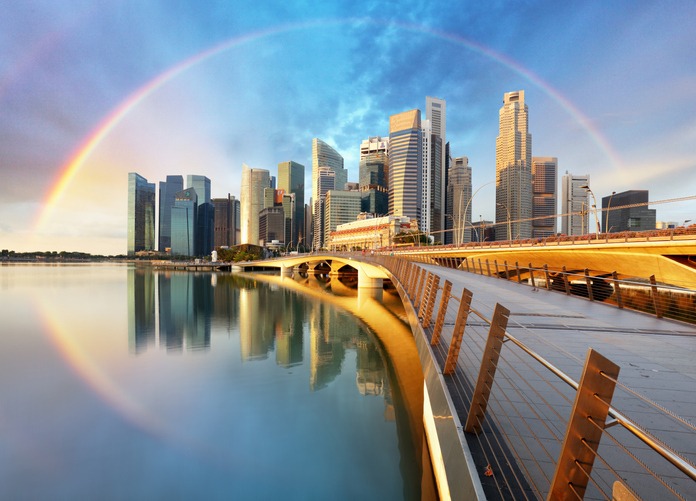We Are
Kadence Singapore.
Our Singapore office
Kadence International is a leading market research agency in Singapore.
From our base here, we conduct market research in Singapore, within South East Asia and across Asia and Australia too. We partner with brands on full service market research projects helping them get closer to customers across these regions and develop products, services and marketing strategies that really land. We can also work with organisations as a fieldwork partner, providing access to respondents across Asia.
As the regional hub, our team reflects our cross-geography sensibilities. In the office we have more than 8 nationalities in our team!
We've been recognised as the best market research agency in Singapore and the best consultant

Market Research Agency of the Year
Winner – Gold
— Agency of the Year Awards, 2021

Consultant of the Year
Winner – Gold
— Agency of the Year Awards, 2021

Consultant of the Year
Winner
— Agency of the Year Awards, 2020

Market Research Agency of the Year
Finalist
— Agency of the Year Awards, 2020

Market Research Supplier of the Year
Winner
— Marketing Research & Insight Excellence Awards – 2019

Market Research Agency of the Year
Winner
— Agency of the Year Awards, 2019

Global Agency of the Year
Highly Commended
— Market Research Society Awards, 2019

Best Training and Development
Highly Commended
— Market Research Society's Operations Awards, 2019

Best Data Collection (telephone)
Finalist
— Market Research Society's Operations Awards, 2019

Best Data Collection (face-to-face)
Finalist
— Market Research Society's Operations Awards – 2019

Innovation of the Year
Finalist
— The AURAs, 2021
Market research services
We work with the world’s leading brands, harnessing research to unlock new ideas, develop future strategies and power business growth.
Customer and market understanding
We bring businesses closer to their customers and help them navigate the broader market, so they can future proof their strategy.
New product development research
We partner with brands to develop winning products, from concept development right through to pricing research.
Brand and advertising research
We help brands create comms that cut through by understanding the messages which truly resonate with your target audience.
Online and offline fieldwork services
We’re a trusted fieldwork partner to top-tier organisations, providing them with the data they need to drive decision-making.
Insight activation
Our work doesn’t stop at the debrief. We go further, workshopping findings and creating standout creative outputs to raise the impact of research and turn insight into action.

Our location
See on Google mapsKadence International – Singapore
22 Malacca Street
#11-00 RB Capital Building
Singapore 048980
Sectors we serve
With over 30 years in the business of market research, we have extensive experience and a depth of knowledge across a range of sectors.
We bring this to bear to design the very best approach to meet your objectives.
Your Premier Market Research Agency
In today’s data-driven world, market research is the cornerstone of informed business decisions. As a leading market research agency, Kadence delivers tailored solutions that empower businesses to grow and thrive in competitive landscapes.
Why Choose Kadence for Market Research?
Global Reach with Local Expertise
Kadence is a market research agency that bridges the gap between international scope and local insights. Our global teams understand regional trends and consumer behaviour & consumer data, providing precise, actionable data and market insights that resonates locally and globally.
Customised Solutions
At Kadence, we recognise the unique challenges each business faces. As a dedicated market research agency, we customise our services to align with your specific project goals—whether it’s understanding consumer behaviour, analysing competitors, or assessing market potential.
- Customer and Market Understanding
We connect businesses with their customers and provide insights into the broader market to future-proof strategies. - New Product Development Research
We collaborate with brands to create successful products, guiding them from concept development to pricing strategies. - Brand and Advertising Research
We help brands craft impactful communications by identifying messages that truly resonate with their target audience. - Online and Offline Fieldwork Services
As a trusted fieldwork partner, we deliver reliable data to top-tier organisations for informed decision-making. - Insight Activation
We go beyond traditional debriefs, facilitating workshops and producing creative outputs to maximise the impact of research and turn insights into action.
Innovative Methodologies
Kadence employs cutting-edge methods to deliver results. Our market research agency uses qualitative interviews, quantitative surveys, and advanced analytics powered by AI to ensure accurate, timely, and comprehensive insights.
Driving Success with Market Research
As a trusted market research agency, Kadence helps businesses achieve success through:
- Detailed Consumer Profiles: Gain a deeper understanding of your target audience to craft strategies that resonate.
- Competitor Analysis: Identify opportunities and fine-tune your approach to stay ahead.
- Product Testing: Validate your products against consumer expectations through robust testing.
Partner with Kadence for Market Research
Kadence is not just another market research agency—we are your partner in achieving business excellence. With a commitment to innovation, transparency, and delivering high-quality insights and research services, Kadence ensures you stay ahead of market trends. Contact us today and let our expertise fuel your next strategic move.
What is Market Research?
Market research is the systematic process of gathering, analysing, and interpreting information about markets, competitors, and customer behaviours. As the foundation of strategic business planning, market research enables businesses to anticipate customer needs, identify trends, and seize opportunities. With comprehensive qualitative and quantitative approaches, a trusted market research agency like Kadence transforms raw data into actionable insights, helping businesses create impactful products, refine marketing strategies, and drive sustainable growth.
How to conduct online market research in Asia: The Go-To Guide
What online methodologies work best in India? How do you get the most out of respondents through digital methodologies in China? Experts across our global boutique share best practice tips and techniques for conducting online market research in Asia.

/WL_bloomberg-392x72.png?width=392&height=123&name=WL_bloomberg-392x72.png)
/WL_unilever3-132x60.png?width=392&height=123&name=WL_unilever3-132x60.png)
/WL_1200px-Samsung_wordmark.svg-144x22.png?width=392&height=123&name=WL_1200px-Samsung_wordmark.svg-144x22.png)
/WL_Panasonic-Logo_288x51.png?width=392&height=123&name=WL_Panasonic-Logo_288x51.png)
/WL_Mitsubishi-110x120.png?width=392&height=123&name=WL_Mitsubishi-110x120.png)
/WL_Mars_Inc_logo_2019_392x112.png?width=392&height=123&name=WL_Mars_Inc_logo_2019_392x112.png)
/WL_Arla-358x240.png?width=392&height=123&name=WL_Arla-358x240.png)
/WL_discover-channel-emblem-png-logo-10-392x107.png?width=392&height=123&name=WL_discover-channel-emblem-png-logo-10-392x107.png)





